Hydraulic hoses are essential components in industrial and mechanical applications, mainly used to transport high-pressure hydraulic oil and provide power for equipment. However, excessive pressure may cause premature hose wear, leakage, and even serious malfunctions.
In this blog post, we will explore strategies for effectively releasing hydraulic hose pressure. We will analyze the causes of excessive pressure, potential consequences, and practical solutions to prevent damage and extend the service life of the hydraulic system.
By mastering these methods, you will be able to improve the performance and reliability of your equipment significantly.
Why release the pressure of the hydraulic hose?
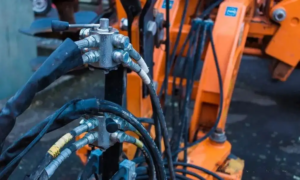
Hydraulic hoses are hoses used to transport hydraulic oil, which is the medium for transmitting energy in all hydraulic systems. However, if hydraulic hoses are not used correctly, hydraulic oil may pose a danger.
When adjusting or disassembling hydraulic system equipment, hydraulic oil may leak from hoses. In this case, even if the engine or pump of the hydraulic system has stopped running, hydraulic oil may still remain in the hose. Trapped hydraulic oil may cause hose rupture and leakage.
Therefore, we must take the issue of hydraulic oil retention seriously. The pressure of the retained liquid may exceed 2000 psi, and the pressurized liquid may penetrate the skin, requiring immediate surgical treatment. In short, the pressurized liquid in hydraulic hoses poses a threat to human health.
What are the risks of residual pressure in hydraulic systems?
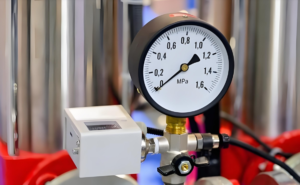
Hydraulic systems generate high pressure in hydraulic hoses, fittings, adapters, connections, and other areas during operation. When the system stops running or the power is turned off, if the internal pressure is not properly released, these "residual pressures" (also known as residual pressures) may still exist and be released at any time, posing a safety hazard. The following are the main risks brought by residual pressure:
1. Risk of personal injury
High pressure hydraulic oil injection: Under residual pressure, hydraulic oil may spray out at extremely high speeds, forming an "oil arrow" that can penetrate the skin and even cause serious tissue damage (medically known as high-pressure injection injury).
Fittings popping or hoses breakage: When disassembling a pressurized hose or fittings, the sudden release of energy may cause the hose fitting to pop out, hitting the operator and causing impact injuries or fractures.
High risk of misoperation: Operators may not be aware of the presence of residual pressure and mistakenly believe that the system is safe before starting maintenance, which can easily lead to accidents.
2. Risk of equipment damage
Seal burst: Residual pressure may exceed the designed pressure range of the seal, causing the seal ring to rupture and leading to leakage.
Fatigue damage to hoses or fittings: Prolonged stagnation of pipelines under residual pressure can lead to fatigue accumulation and accelerate material aging.
Valve stuck or damaged: Some valve components are designed to be disassembled under normal pressure. If operated under pressure, it may damage the valve core or sealing structure.
3. Increased maintenance difficulty
Difficult to loosen hose fittings: Quick couplings or threaded connections with pressure are difficult to unscrew in residual pressure, and may even become completely stuck.
Time consuming maintenance: Additional time must be arranged to handle residual voltage, which increases downtime and maintenance difficulty.
4. Hydraulic oil pollution and waste
Oil splashing: Incorrect disassembly causes hydraulic oil splashing, which not only pollutes the environment but may also bring cleaning costs.
Oil degradation: The aging rate of oil is accelerated under residual pressure and high temperature environment, which shortens the service life.
5. System malfunction
Accumulator not depressurized: Some hydraulic systems have accumulators, and if the pressure is not drained, it may suddenly release in certain situations, causing system components to unexpectedly move (such as the cylinder moving instantly).
Troubleshooting of Common Pressure Residual Problems in Hydraulic Systems
- Before operation, confirm whether the system is completely depressurized
- Use quick connectors with pressure relief function
- Check and maintain pressure relief valves, oil drain ports, and accumulator drain devices
- Train operators to have residual pressure identification and discharge skills
Possible reasons why hydraulic hose pressure cannot be released
- Pressure relief device is blocked or failed
- Solenoid valve/check valve is not reset in time
How does temperature affect hydraulic hose pressure
Temperature significantly affects the pressure of hydraulic pipelines, mainly reflected in the viscosity of hydraulic oil. Viscosity is the resistance to fluid flow; As the temperature changes, this resistance also changes, directly affecting the smoothness of fluid flow in the pipeline, thereby affecting the required flow rate and pressure to complete the work.
High temperature: After the hydraulic oil is heated up, its viscosity will decrease, which means it will become thinner and easier to flow. Although this may seem beneficial for reducing resistance, excessive thinning can lead to:
Increased internal leakage (slip): Thin fluid is more likely to bypass the internal clearances of seals, pumps, valves, and cylinders, resulting in decreased efficiency and reduced power delivered to the cylinder. This means that the hydraulic pump must work harder to maintain the required pressure, which may generate more heat.
Reduced lubrication: Thinner fluids provide less lubrication between moving parts, increasing friction and wear on components such as pumps, motors, and cylinder seals, leading to premature failure.
Fluid degradation: High temperatures accelerate the oxidation and decomposition of hydraulic oil, forming sludge and varnish, clogging filters and valves, and further affecting pressure and system performance.
Degradation of hoses and seals: Extreme high temperatures can cause the rubber and elastomer materials in hoses and seals to harden, rupture, or become brittle, resulting in leakage and pressure loss.
Low temperature: On the contrary, when hydraulic oil cools down, its viscosity increases, making it thicker and causing greater flow resistance. This may lead to:
Increased pressure drop: Thicker fluids require greater force to pass through hydraulic pipelines, resulting in a higher pressure drop across the entire component and requiring the pump to generate greater pressure to achieve the same flow rate.
Slow operation: Due to increased fluid flow resistance, the entire hydraulic system may become slow and unresponsive.
Cavitation: At extremely low temperatures, high viscosity fluids may not flow into the pump inlet quickly enough, creating a vacuum and causing dissolved air in the fluid to form bubbles (cavitation). These bubbles burst under pressure, damaging pump components and causing operational noise and reduced efficiency.
Brittle hoses and seals: Low temperatures can make hydraulic hoses and seals less flexible and brittle, increasing the risk of rupture, especially during start-up or rapid movement, leading to leakage and pressure loss.
Precautions for using hydraulic hoses in different environments (such as low or high temperatures)
Hydraulic hoses will perform significantly differently at different ambient temperatures. Extreme cold or high temperature conditions will affect their material properties, oil viscosity and the stability of the overall system. To ensure safe operation of the system and extend the service life of the hose, the following are precautions for use in different temperature environments:
Precautions in extremely cold environments (such as below -40°C)
1. Hose materials tend to harden and lose flexibility
Ordinary rubber materials (such as NBR) will harden and crack at low temperatures.
It is recommended to use low-temperature special outer rubber materials, such as synthetic rubber (such as CSM, LT-NBR) or thermoplastic materials (such as TPU).
2. Increased bending radius of the hose
The flexibility of the hose decreases in the cold and hard state. The bending radius needs to be increased during installation to avoid stress concentration or cracks at the bend.
3. Increased viscosity of hydraulic oil
Low temperature makes the hydraulic oil thicker and less fluid, causing increased system pressure.
Use low-temperature special hydraulic oil and preheat the system appropriately.
4. Preheat before starting
When the equipment is cold started, the pressure should be increased and preheated slowly to avoid instantaneous high pressure impact on the hose.
Recommendations:
Choose hydraulic hoses that have passed low temperature tests such as ISO 10619-2 and SAE J517
During installation, try to avoid outdoor exposure and add insulation measures
Precautions in high temperature environment (such as above +100°C)
1. Accelerated aging of hose materials
High temperature accelerates the aging and hardening of the hose rubber layer, shortens its life, and even causes cracks or delamination.
It is recommended to use high-temperature oil-resistant rubber, such as EPDM, Viton or high-performance fluororubber.
2. Oil oxidation and pressure fluctuation intensify
Long-term high temperature causes the hydraulic oil to oxidize, produce sediments, and affect the system efficiency.
It is recommended to use hydraulic oil with good high-temperature stability, such as anti-oxidation and anti-wear hydraulic oil.
3. Prevent fittings from loosening or leakage
The thermal expansion and contraction effect may cause the seal at the joint to fail, and the torque and sealing ring status need to be checked regularly.
4. Avoid hoses near heat sources
For example, engine exhaust pipes, heaters, etc., heat insulation boards or sheaths should be installed to avoid direct radiation of high temperatures.
Recommendations:
Use high-temperature hydraulic hoses with a nominal operating temperature ≥ +125°C
Inspect the heat resistance of the hose or evaluate the replacement cycle every six months
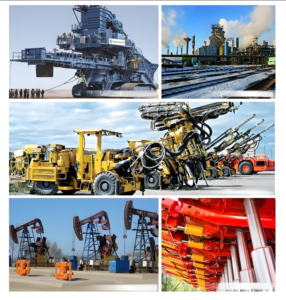
Sinopulse suggests choosing:
We recommend selecting hydraulic hose products that meet the following standards based on the temperature range of the working environment:
| temperature environment | Sinopulse hose series | temper range | feature |
|---|---|---|---|
| Low temperature | Sinopulse artic hose series: SAE 100 R2AT | -50°C to +100°C | Good flexibility and strong cold resistance |
| High temperature | Sinopulse high temper hose series: EN 856 4SH / SAE 100 R13 | -40°C to +125°C | Dual resistance to high pressure and high temperature |
| Normal | Sinopulse standard hose series: SAE 100 R1AT | -40°C to +100°C | Economical and practical, suitable for most scenarios |
How to Release Pressure from a Hydraulic Hose
Releasing pressure from a hydraulic hose is a critical safety measure that should be performed prior to any maintenance or repair. Here is a step-by-step guide on how to do it safely:
1. Identify a Pressure Relief Valve:
Visual Inspection: Check if the valve has a pressure gauge or an adjustable lever or knob. These are common signs of a pressure relief valve.
Consult Documentation: Consult the system operator's manual or schematics for specific information on the valve's location and function.
Labels: Pressure relief valves are often labeled or marked to indicate their purpose.
2. Isolate Hydraulic Hoses:
Valves and Shutoffs: Locate and close the valve or shutoff that controls the flow of hydraulic fluid to a specific hose. This may include a manual valve, solenoid valve, or other isolation device.
Multiple Hose Lines: If the hose is part of a complex system with multiple lines, multiple valves may need to be isolated to ensure complete isolation.
3. Release the pressure:
Open the valve: Carefully turn or adjust the pressure relief valve to the open position. This will release the excess pressure.
Monitor the pressure: Use a pressure gauge connected to the system to monitor the pressure drop. The pressure gauge should gradually approach zero.
Rate of release: The rate at which pressure is released may vary depending on the size of the safety valve and the amount of pressure in the system.
4. Verify pressure release:
Visual inspection: Check for signs of leaks around hoses, fittings, or pressure relief valves. If leaks are present, correct them before continuing.
Test hydraulic hoses: Gently bend or move the hydraulic hose to ensure there is no resistance. If the hose moves freely, pressure has been released.
Pressure gauge: Verify that the gauge reads zero.
5. Secure hydraulic hoses:
Caps or plugs: Once pressure is released, cap or plug the ends of the hoses to prevent hydraulic fluid from entering the system.
Safety measures: Make sure the caps or plugs are secure to avoid leaks or accidental reconnections.
CAUTION!
- SAFETY FIRST: Always wear appropriate personal protective equipment and follow safety guidelines when working with hydraulic systems. Never loosen fittings by hand to release pressure
- CONSULT A PROFESSIONAL: If you are unsure about any step or the system is complex, consult a qualified technician or engineer.
- SYSTEM SPECIFIC PROCEDURES: The specific procedure for releasing pressure may vary depending on the type of hydraulic system and the components involved.
- DOCUMENTATION: Refer to the system documentation for any specific instructions or precautions.
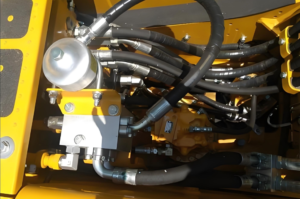
Prevent hydraulic oil leakage
Before applying hydraulic pressure, tighten all hydraulic joints and keep your hands and body away from pinholes and nozzles that will spray high-pressure hydraulic oil. The spray of hydraulic hoses is extremely dangerous to the human body, so be sure to pay attention to self-protection.
You can use cardboard or a piece of paper to test the location of hydraulic oil leaks, and then release the pressure before disconnecting the hydraulic pipe system. Do not cross the hydraulic pipes.
High temperature or high temperature will cause the hydraulic oil to expand thermally, resulting in a large increase in pressure. High pressure will cause hydraulic oil to splash. Therefore, be sure to release the hydraulic oil before loosening the hydraulic hose joints.
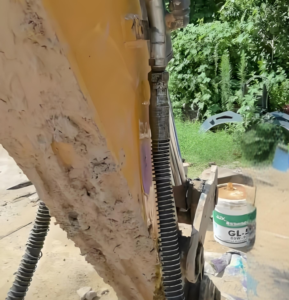
Leaks cause hydraulic system pressure drop
In hydraulic systems, leaks not only cause system pressure drop and reduced efficiency, but may also cause serious personal injury and equipment damage. Therefore, regular detection and correct identification of leak locations are crucial.
Leak detection method
Paper towel detection method
Use a clean white paper towel, cloth strip or paper close to the suspected leaking part (such as a joint or hose interface).
Observe whether oil stains appear quickly on the paper surface to determine whether there is a leak.
Advantages: safe, sensitive, and no contact with high-pressure oil.
Note: The equipment should be in operation during the test, and be careful to avoid high-speed rotating parts.
Finger test is strictly prohibited
Do not touch the suspected leak point directly with your fingers or palms.
High-pressure hydraulic oil may spray out at a very high speed, forming an "oil arrow" that can penetrate the skin, causing high-pressure injection injuries, and even endangering life.
Once a puncture injury occurs, you need to seek medical treatment and surgical debridement immediately, and do not handle it yourself.
Other auxiliary methods
Ultraviolet detection: Add fluorescent tracer and use ultraviolet light to find small leaks.
Pressure test instrument: Connect the test port to monitor whether the pressure continues to drop.
Apply inspection fluid: Use special leak detection foam or soap solution, and bubbles will appear at the leak.
Common locations of leakage
1. Loose fittings or seal failure
Lack of connection between hose and joint, rust, incorrect installation angle, etc., can lead to chronic leakage or instantaneous leakage.
Aging or compression deformation of O-rings and gaskets are often the source of leakage.
2. Damaged or aged hose
Cracks, cracks, wear or bulging of the outer layer of the hose may be caused by long-term pressure fatigue, high temperature aging, and frequent bending.
Observe whether the hose has oil accumulation, oil seepage lines or darkening of color.
3. Failure of O-rings and sealing rings
Mismatched O-ring materials or exceeding the temperature/pressure use limit can cause deformation, cracking or hardening.
Improper installation or missing installation may also cause leakage.
4. Valve and pump body interface
Especially in areas with frequent operation or severe vibration, problems such as loose thread seals and broken flange gaskets are also common.
Hydraulic Hose Quick-Release Couplings - Safe, leak-free connections for safe pressure
Hydraulic hose quick-release couplings are specialized connectors that quickly and efficiently disconnect and reconnect hydraulic hoses. They are designed to provide safe, leak-free connections while minimizing downtime and reducing the risk of operator injury.
Key Features and Benefits:
Quick Connect and Disconnect: Quick-release couplings provide an easy, time-saving solution for connecting and disconnecting hydraulic hoses. Operators can quickly make or break hydraulic connections with just one motion.
Safe, leak-free connections: These couplings are designed to provide a reliable, leak-free seal that prevents hydraulic fluid from escaping and ensures operator and equipment safety.
Versatility: Quick-release couplings are available in a variety of sizes and configurations to accommodate different hose diameters and hydraulic system requirements.
Increased Efficiency: By reducing the time required to connect hoses, quick-release couplings can increase overall system efficiency and productivity.
Operator Safety: These couplings eliminate the need for hand wrenches or other tools to tighten or loosen the connection, helping to reduce the risk of operator injury.
Common Types of Hydraulic Hose Quick Release Couplings:
Push-Pull Couplings: These couplings use a simple push-pull connection and disconnection mechanism. They are easy to use and have a wide range of applications.
Lever-Release Couplings: Lever-Release Couplings require pulling or pushing a lever to connect or disconnect the hose. These couplings generally provide a more secure connection than push-pull couplings.
Automatic Couplings: These couplings automatically connect or disconnect when the hose is connected. They are especially useful in applications that require frequent connections and disconnections.

Applications of Hydraulic Hose Quick Release Couplings:
Construction and Heavy Equipment: Quick release couplings are often used in construction and heavy equipment applications to quickly connect and disconnect hydraulic tools and accessories.
Industrial Machinery: They are also used in a variety of industrial machinery to facilitate maintenance, repairs, and system reconfiguration.
Agricultural Equipment: Quick release couplings can quickly connect and disconnect farm implements, thereby increasing the efficiency of agricultural equipment.
Mobile Hydraulic Systems: These couplings are ideal for mobile hydraulic systems, such as those in trucks, trailers, and construction vehicles.
Hydraulic hose quick connectors are used with dust caps
Hydraulic hose quick connectors are usually used to quickly connect and disconnect hoses to equipment. In various industrial and mobile equipment environments, connectors are often exposed to pollutants such as dust, sand, moisture, and metal chips. If dust caps are not used for protection, these pollutants can easily enter the hydraulic system and cause serious consequences. Therefore, in harsh environments such as agriculture, construction machinery, and mining, the use of dust caps is almost an indispensable standard operation to extend equipment life and reduce maintenance costs.

Function of dust cap
1. Prevent impurities from entering the system
When the quick connector is disconnected, its internal connection port is exposed and easily invaded by pollutants such as dust, sand, mud, and water droplets.
Once pollutants enter the hydraulic system, a series of chain reactions will occur, such as oil contamination, valve jamming, seal wear, and component damage.
2. Prevent joint corrosion
The dust cap can effectively block the corrosion of the metal surface of the joint by humid air, rainwater, and corrosive liquids.
It can extend the service life of the joint, especially suitable for outdoor, high humidity, marine or chemical environments.
3. Improve system reliability and safety
Clean joints mean more reliable connections, avoiding poor joint sealing or sudden disconnection due to foreign matter inclusion.
In emergency connection or replacement, the operation can also be completed faster and safer.
4. Convenient for maintenance and management
The dust cap is brightly colored, making it easy to identify whether the system has been properly capped, whether there is any omission or damage.
Some dust caps are designed with lanyards to prevent loss and are more suitable for occasions where they are frequently disassembled and assembled.
Common Types of Dust Caps
| TYPE | MATERIAL | FEATURE |
|---|---|---|
| Plastic dust cap | PE / TPU | Lightweight and economical, suitable for most working conditions |
| Rubber dust cap | NBR / EPDM | Good elasticity, strong sealing, high oil and weather resistance |
| Metal dust cap | Stainless steel / Aluminum alloy | High temperature resistance, mechanical shock resistance, suitable for extreme environments |
Sinopulse recommends
All hydraulic quick connectors must be equipped with dust caps when leaving the factory and during transportation;
When used on site, the dust caps must be immediately covered after each disconnection;
If the dust cap is found to be broken, deformed or lost, it should be replaced in time to avoid system contamination.
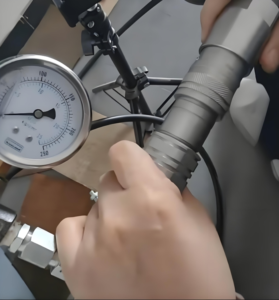
How to safely operate Quick release hydraulic hose fittings
Quick Release Hydraulic Hose Fittings are widely used in hydraulic systems to quickly connect and disconnect hydraulic hoses or equipment. When using these fittings in high-pressure environments, safe operation is critical. Improper handling may cause high-pressure oil to spray out, equipment damage, or even personal injury.
The following are the steps and precautions that must be followed to correctly and safely operate quick release fittings:
Preparation before operation
1. Confirm that the system has been depressurized
Quick release hydraulic hose fittings must not be operated under pressure (unless they are specially designed pressurized plug-in types). Manual or automatic pressure relief devices must be used to confirm that there is no residual pressure inside the system.
Check whether the pressure gauge is zero, or use the drain valve to drain the hydraulic oil.
2. Wear protective equipment
Wear protective gloves and goggles to prevent hydraulic oil from accidentally spraying and injuring people or burning eyes.
Stand sideways and avoid facing the Quick release hydraulic hose fittings head-on.
3. Clean the Quick release hydraulic hose fittings and dust caps
Use a clean cloth to wipe the male and female interfaces to ensure that there is no dust, oil or impurities to avoid contaminating the system.
Check whether the dust cap is damaged or missing.
Steps to connect Quick release hydraulic hose fittings
Quick release hydraulic hose fittings are aligned with the insertion direction to avoid skewness
Align the male end with the female end socket, keep the axis aligned, and push it in slowly.
Push the Quick release hydraulic hose fittings until it is locked
Hear a "click" sound or see the locking ring return to its position to confirm that the connector is fully locked.
For threaded locking connectors, tighten the locking ring.
Gently pull the Quick release hydraulic hose fittings and hose to confirm that the connection is secure
After completing the connection, gently pull the male end by hand to confirm that it cannot be pulled out, indicating that the connector is locked in place.
Steps to disconnect Quick release hydraulic hose fittings
Confirm that the system is pressure-free again
Especially when hydraulic work is completed or the machine is shut down for maintenance, be sure to ensure that there is no residual pressure in the system.
Operate the locking device or pull ring
According to the type of Quick release hydraulic hose fittings (such as push-pull type, pull ring type, threaded locking type), release the locking structure correctly according to the instructions.
Pull out the Quick release hydraulic hose fittings slowly
When disconnecting, the action should be slow and smooth to prevent sudden ejection and splashing of oil.
Immediately cover the dust cap
After disconnection, the male and female heads should be sealed with dust caps immediately to avoid contamination such as dust and moisture.
Precautions for safe operation
Do not plug or unplug Quick release hydraulic hose fittings when the system is running or loaded, unless it is clearly marked to support pressure operation;
Do not hit the joint with a hammer or tool to avoid damaging the locking structure or seal;
Regularly check the joint seal, locking mechanism and wear to prevent loosening or leakage;
If there is too much resistance during installation or removal, do not force the operation, and check whether there is residual pressure or dirt stuck.
How to choose hydraulic fittings that are easy to release pressure
In hydraulic systems, residual pressure is one of the common challenges in equipment maintenance and quick connection.
Correctly selecting hydraulic fittings that are easy to release pressure can effectively reduce the safety hazards caused by residual pressure in the system, improve maintenance efficiency, and extend the service life of hoses and connectors.
There is no single standard for selecting hydraulic fittings that are easy to release pressure, but it should be considered comprehensively from multiple dimensions such as structural design, functionality, safety, and usage scenarios.
Considering the pressure relief plan in advance not only ensures the safety of operators, but also improves the efficiency of equipment use and system stability.
The following are the key factors and recommended types when selecting such hydraulic fittings:
1. Choose a quick connector with a pressure relief function
Recommended function:
Automatic pressure relief valve is installed inside
Residual pressure can be released slowly during plugging and unplugging
Low resistance when inserting, no oil spray when disconnecting
2. Equipped with manual pressure relief valve or exhaust valve
A special pressure relief device should be reserved in the system design to facilitate maintenance personnel to safely relieve pressure before operation.
Recommended configuration:
Manual knob pressure relief valve
Automatic pressure limiting + pressure relief combination valve
Three-way pressure relief valve that can return oil to the oil tank
Advantages: safe and controllable, suitable for standard operations before hose removal and filter element replacement.
3. Choose a diverter block or connector seat with a buffer function
Some hydraulic accessories such as diverter blocks and quick-change connector seats have a buffer chamber that can temporarily accommodate oil pressure and reduce instantaneous impact.
Especially suitable for use in multi-tube parallel systems and quick mold change systems.
4. Use seals and connector materials with good pressure resistance and stability
Even if the accessories are reasonably designed, if the seal ring is not pressure-resistant or deformed after high temperature, it is easy to cause difficulty in disassembly or residual pressure.
Material recommendations:
Seals: Use high temperature and pressure resistant FKM (Viton), EPDM and other materials
Metal parts: Use high-strength carbon steel or stainless steel materials, anti-corrosion and pressure resistant
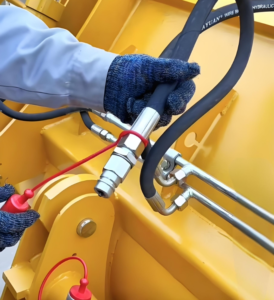
Conclusion
Relieving pressure from hydraulic hoses is essential to prevent damage, ensure safety, and extend the life of your hydraulic system. Understanding the causes of overpressure and taking effective action can significantly improve the performance and reliability of your equipment.
Keep the following in mind:
1. Monitor pressure levels: Check the hydraulic system pressure gauge regularly to detect abnormal conditions.
2. Maintain proper fluid levels: Make sure the hydraulic reservoir oil level remains within the correct range.
3. Use high-quality hoses and fittings: Invest in durable hydraulic hoses and fittings that can handle pressure fluctuations.
4. Check for leaks and damage: Check hoses and fittings regularly, watching for signs of wear or damage.
5. Avoid overheating: Take steps to prevent the system from overheating, which can cause pressure to increase.
By following these guidelines and seeking professional help when necessary, you can effectively manage pressure in your hydraulic system and reduce the risk of problems.